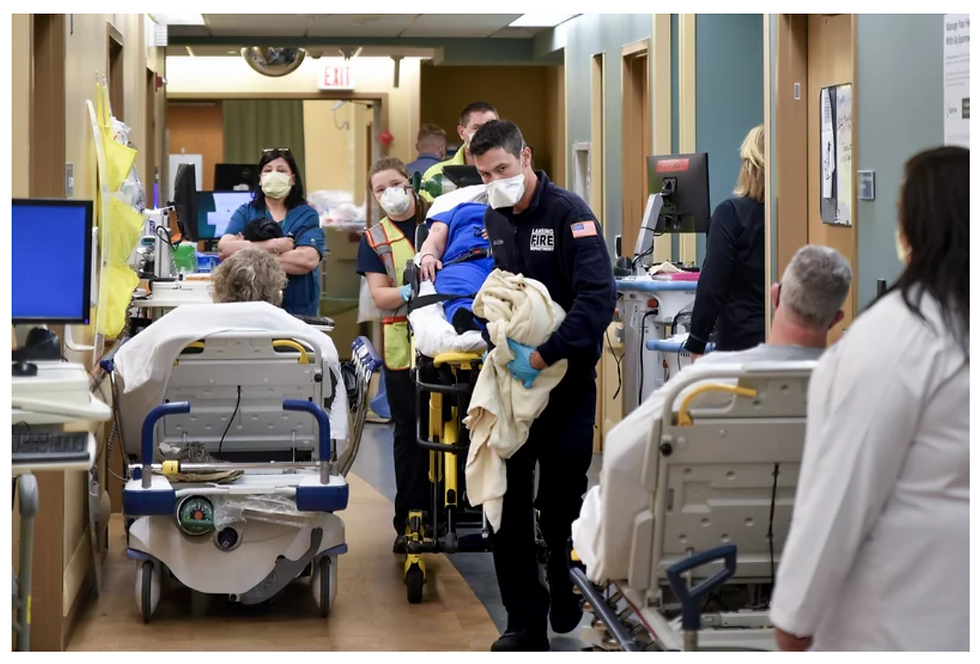Our Thoughts on the March 2017 MedPAC Report
- katherinepiette
- Mar 23, 2017
- 3 min read
Updated: Mar 30, 2021

Well, there were no big surprises from the Medicare Payment Advisory Commission’s (MedPAC) most recent report to Congress (March 2017). As has been their position in the past, they again recommend substantial payment cuts or holds on increases for all post acute providers. MedPAC continues to cite inefficiencies in care delivery and associated costs and wide geographical variation in spending as the reason behind the recommended cuts. MedPAC continues to telegraph that Medicare cuts are here to stay and traditional volume driven care delivery models will be replaced by new value-based models that deliver the triple aim - better care and better health at a reduced cost.
Additionally, during the March 2017 MedPAC report, the committee took the opportunity to “call out” Congress by saying that if Congress had implemented their 2008 home health agency and skilled nursing facility recommendations, Medicare would have saved about $11 billion over the period of 2009 to 2016. And after that rebuke, they point out that over $30 billion could be saved over the next 10 years, if Congress adopts these current recommendations. They do not make any assumptions regarding access to patient care or recognize post acute providers’ role in the success of certain value-based initiatives (such as bundled payments).
As detailed in MedPAC’s Report to Congress, March 2017, Fact Sheet, the recommendations are:
Skilled Nursing Facilities:
Eliminate payment increases for 2018 and 2019
Home Health Agencies:
Reduce payment rates by 5 percent for 2018
Implement a two-year rebasing of the payment system beginning in 2019
Eliminate the use of the number of therapy visits as a factor in payment determinations (concurrent with rebasing)
Inpatient Rehabilitation Facilities:
Reduce the Medicare payment rate by 5 percent for 2018
Long-Term Care Hospitals:
Eliminate increases in payment rates for 2018
Hospice:
Eliminate increases in payment rates for 2018
So, what does this mean for post-acute providers - It means get ready for value-based care, NOW! How do you prepare?
Align with value-based delivery models in your area - Accountable Care Organizations, bundled payment projects, etc.
Leverage technology to increase your efficiencies, gain access to scarce resources, and manage care longitudinally across care settings
Provide evidence based best care treatment plans to improve quality metrics
To conclude, I want to leave you with a quote that I recently took away from a speaker at a national conference:
“The amount of money you are being reimbursed from Medicare today, is the most you will ever be reimbursed again.”
Leveraging technologies is one way Corstrata can help you with your wound management. Our board certified wound experts can serve as your in house CWOCN and recommend the most recent evidence based wound treatments and dressings for your patients using our HIPAA secure smart device app.
Corstrata utilizes mobile technologies to create access to its board-certified wound care specialists to produce a return on investment for our customers. Corstrata assists providers in the proper assessment of wounds during the completion of the OASIS C2 or MDS assessments. Additionally, we collaborate with providers to develop a wound program that includes evidence-based, best practice wound treatments, staff education, pressure ulcer prevention program, and wound formulary redesign. Corstrata provides wound image and video consults that include accurate identification of the wound type and associated staging, precise wound measurement, and recommended treatment and wound dressing.





Comments